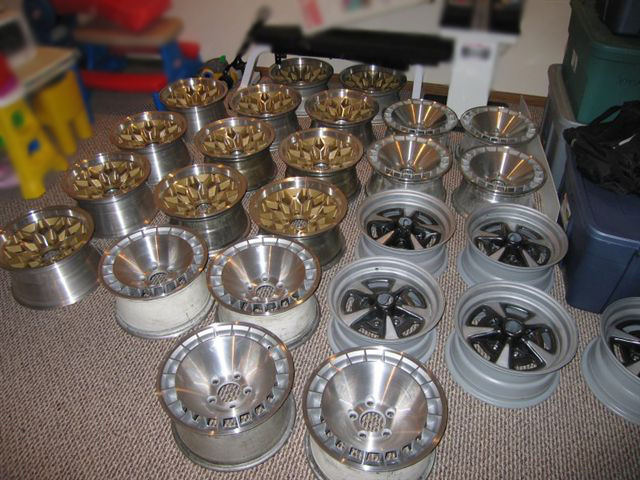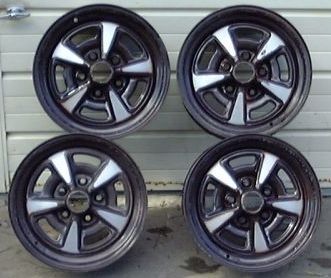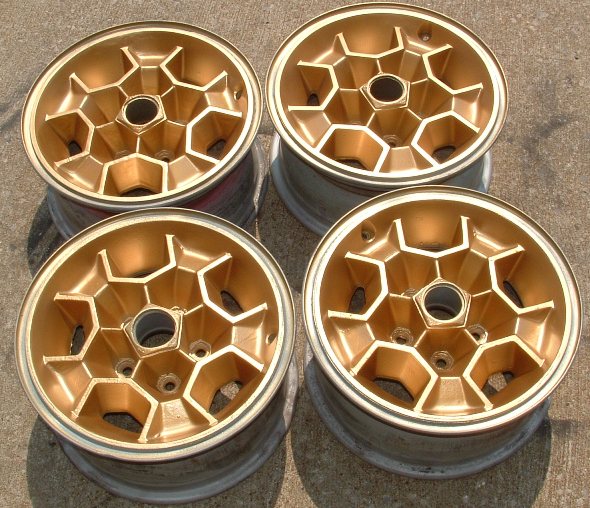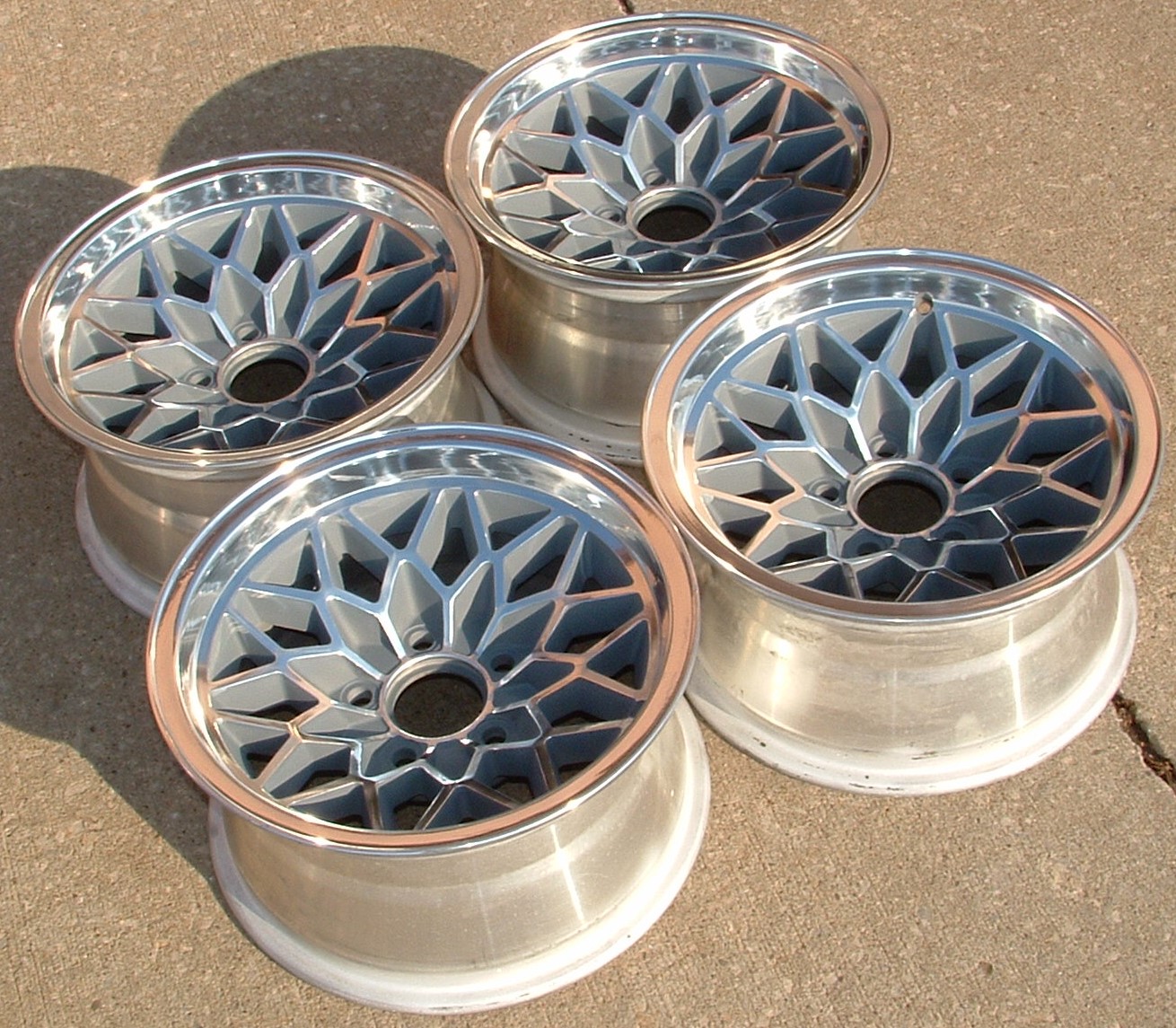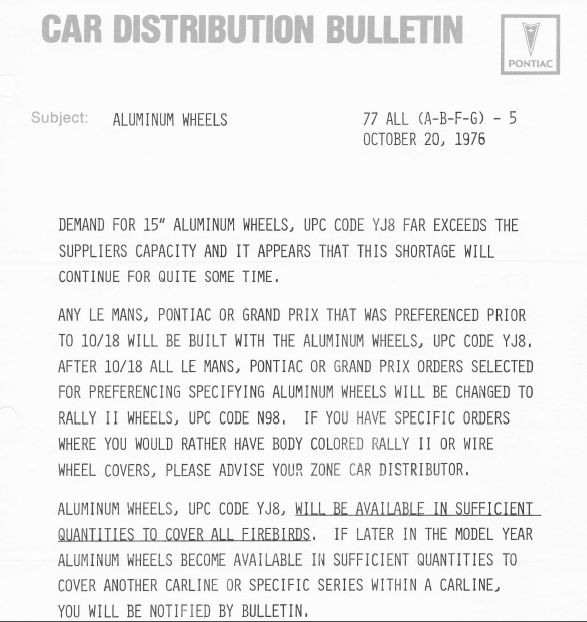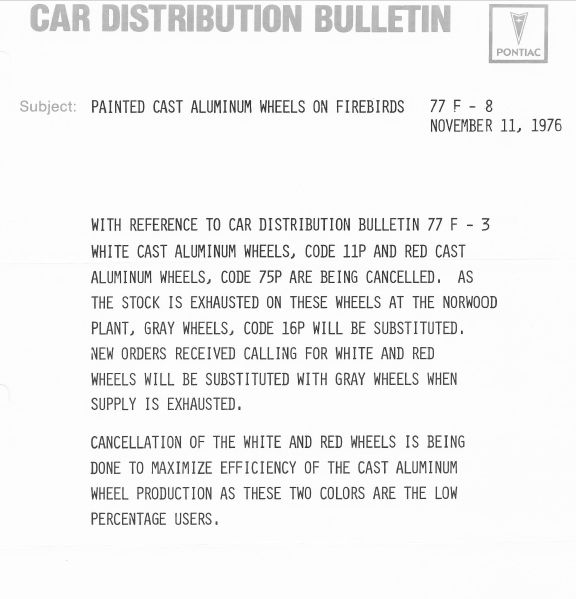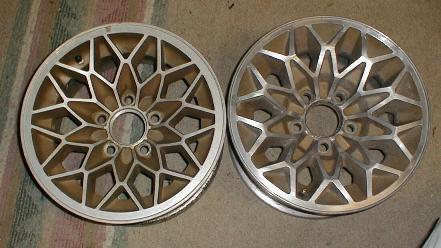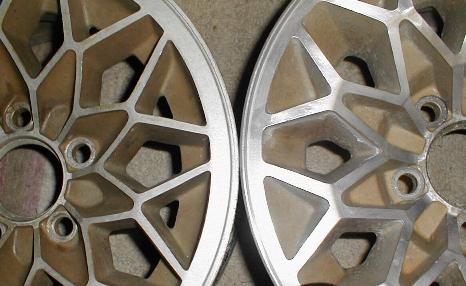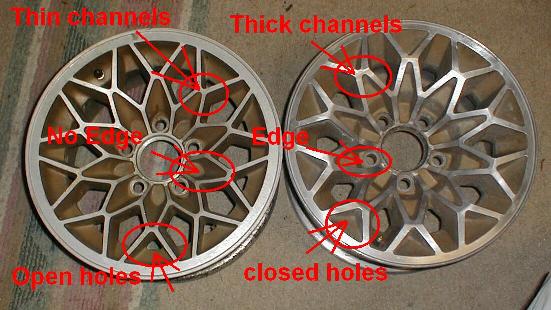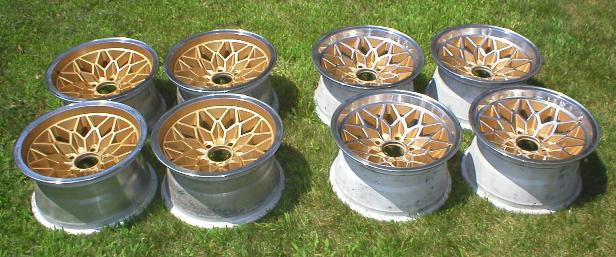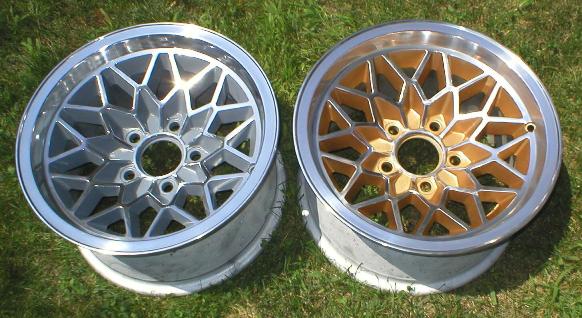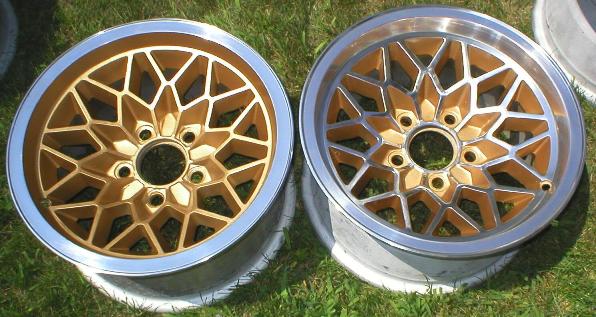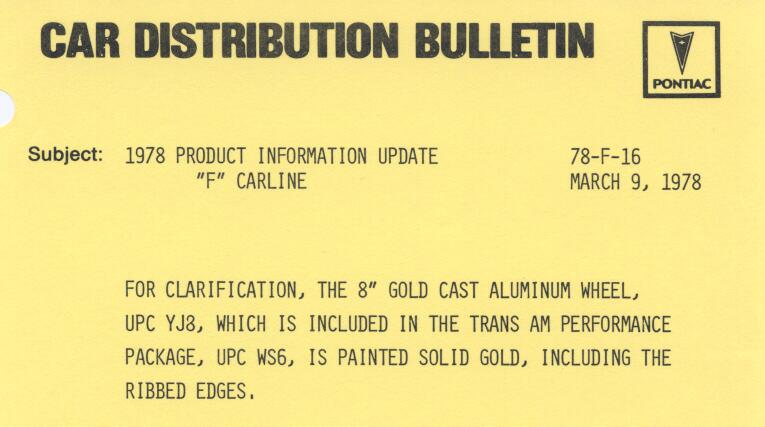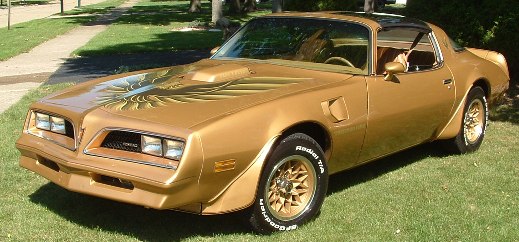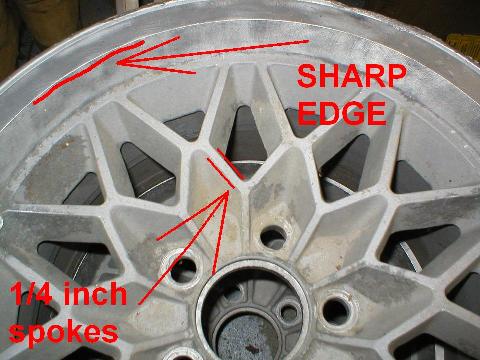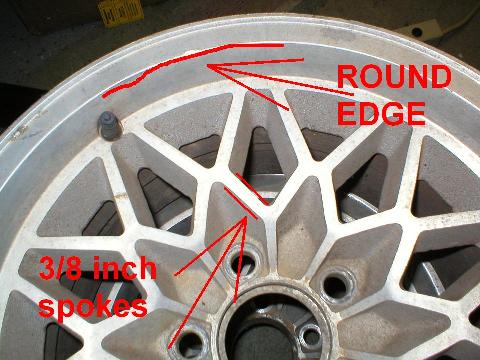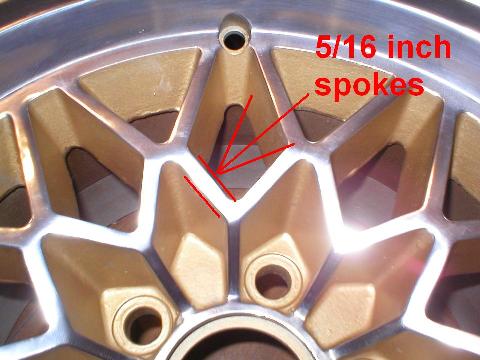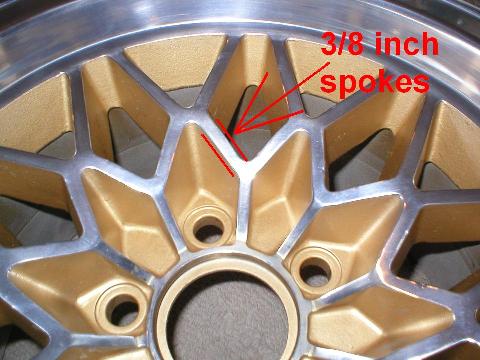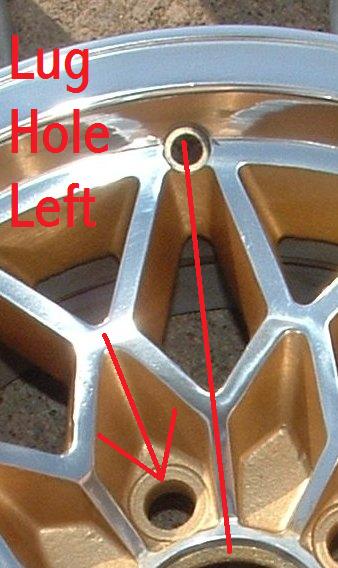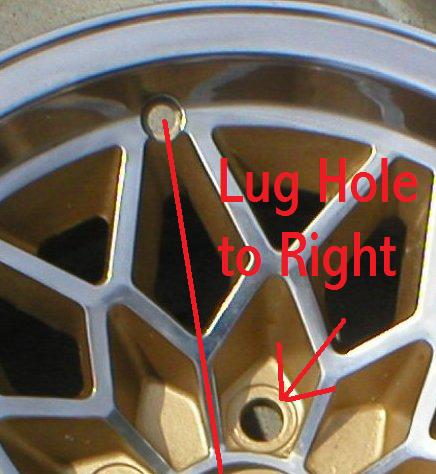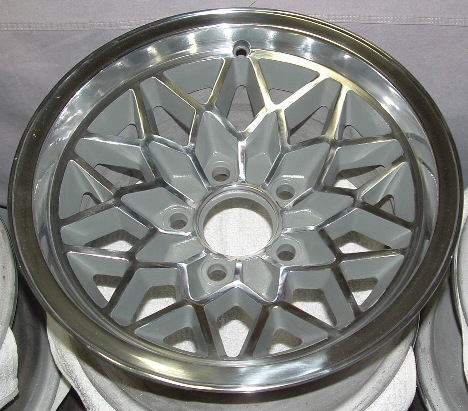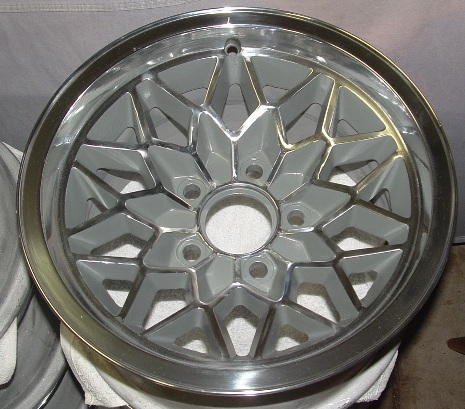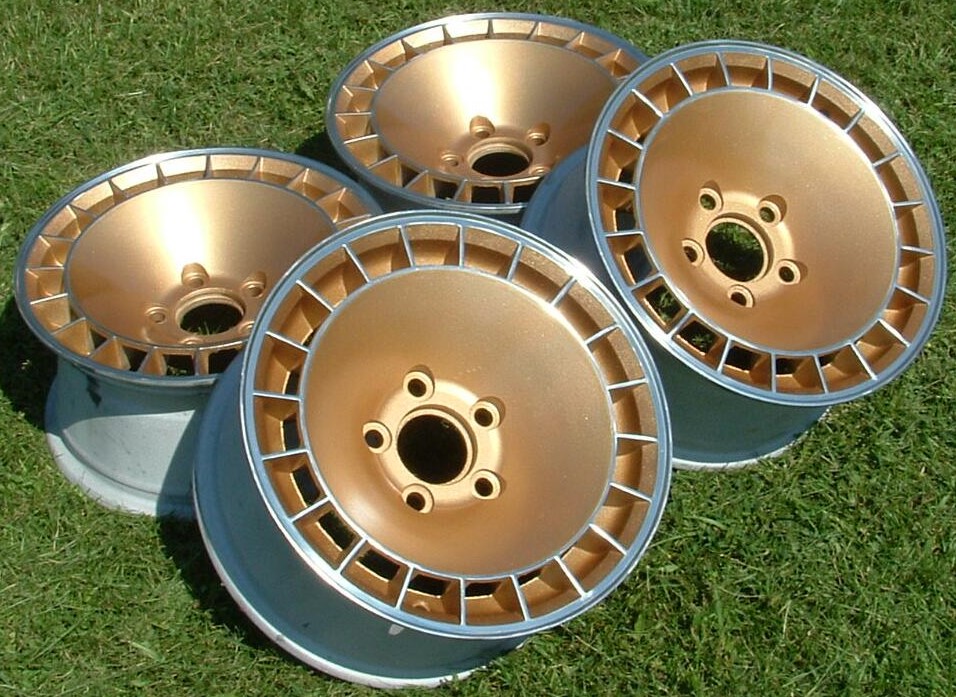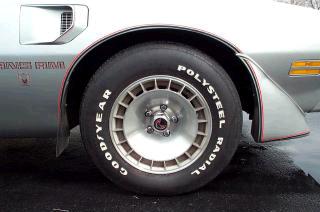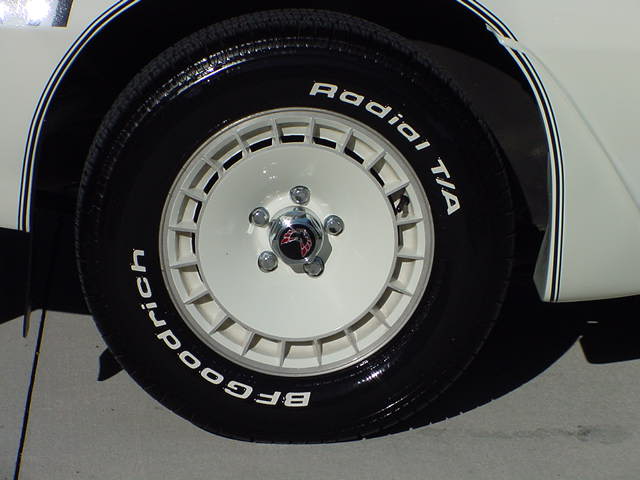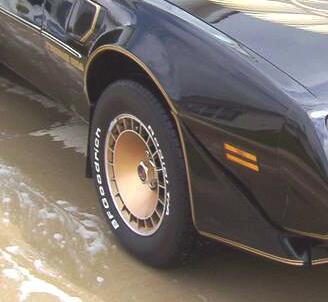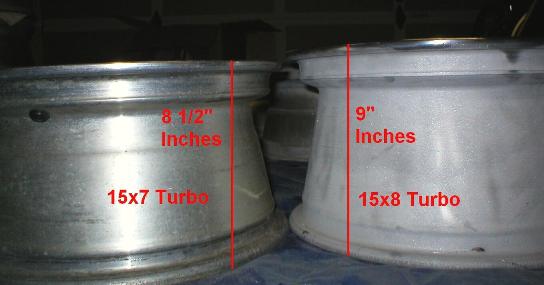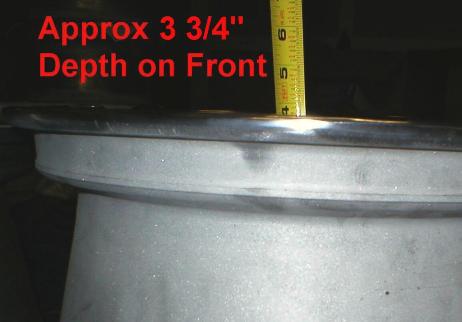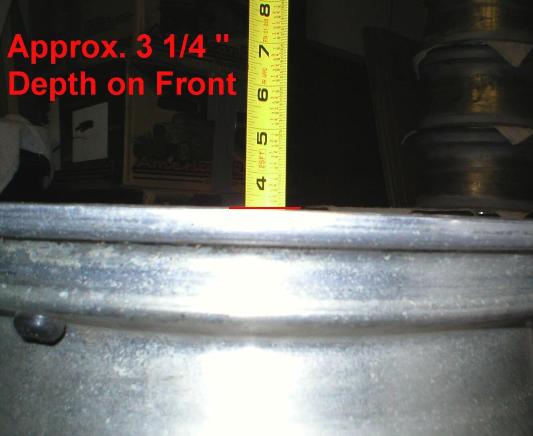There are slight differences between the 15x7 Turbo Rims and the WS6 15x8 Turbo Rims. It is hardly noticeable but when you line the two up together, you can definitely see the difference. From the top looking down at the Turbo rims, it is hard to tell. In the photo below you can't even really see a difference can you? Ok, besides one is real shinny and the other one is real dull.
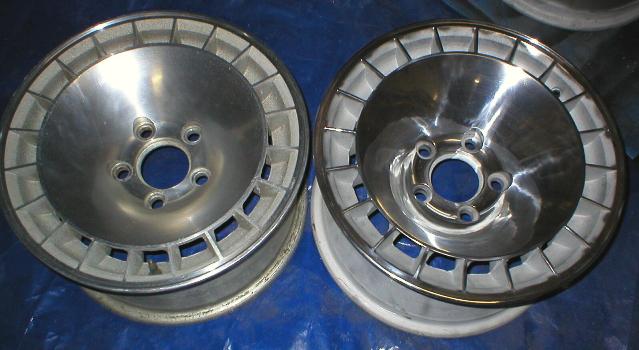
The difference between the rims really comes in the depth of the front dish. The rims are real close in height. They are both 16 inches across, but the 15x7 Turbo rim is only 8 1/2 inches tall whereas the 15x8 Turbo rim is 9 inches tall.
The difference come in the front dish depth of the rim. They both have a 4 1/2 inch back spacing to them, but the front spacing is different. The 15x7 Turbo only has about a 3 1/4 inch depth and the 15x8 Turbo has about a 3 3/4 inch depth. It is really noticeable when you look closely at them.
So, if some one is selling you a set of Turbo rims and you need the 15x8 inch ones for 10th Anniversary cars, then ask them the EXACT measurements on the height of the rim. Some people measure them and see that they are 8 1/2 inches tall, so they figure they have 15x8 inch Turbo Rims... Well, they aren't. Don't take round numbers like "Well, its about 9 inches...", ask them the EXACT height.
Rim Measurements
The last thing to take a look at is the measurements for the rims. I get alot of questions on people who want to change rims and ask what other type of rim will fit. Well, it would be too long of a list to list every type/style/manufacturer of rim that would fit the Trans Ams and Firebirds. So what I will cover is how to measure the rims to know if the rim will even fit the car. The first thing to take a look at is the lug pattern. The GM cars like the Firebird and Trans Am used the 5 on 4 3/4" lug pattern. What does this mean? It means there were 5 lugs that held the rim on and they were spaced at 4 and 3/4 inches apart. So looking at the rim, you can easily tell if it has 5 lugs or not. But the correct spacing for measuring the lug pattern is done by measuring from the back on one hole to the center of the hole diagonal to it (shown below). So, on all of the snowflakes, honeycombs, turbo, and rally rims, the measurement was a 5 lug pattern spaced at 4 3/4 inches apart.
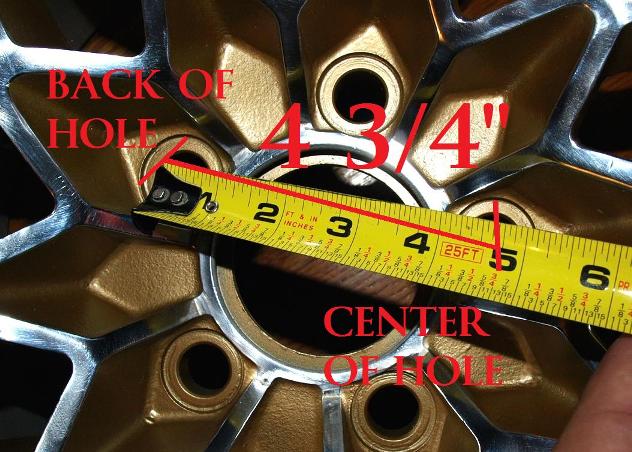
The next thing to take a look at is the offset and backspacing for the rims. The backspacing is easy to measure. Place one of your rims up on its edge and take a measuring tape and place the end of it flush to the back inside of the rim where the lug nuts would attach (where it would sit flush against the hub or drum of the car). Then take a look straight down the edge of the rim and see where the edge of the rims line up and take your measurement (shown below). As you see in the photos below, this rim has a 4 3/4 inch backspacing.
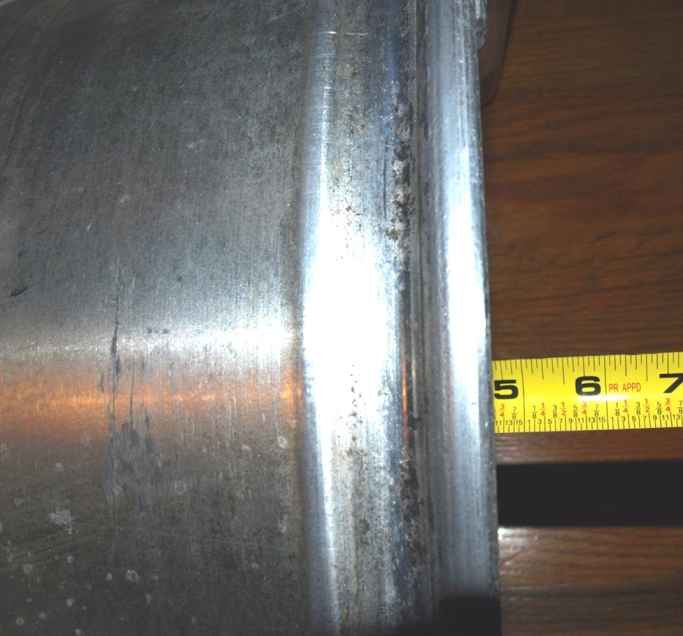
The last item to take a look at when thinking about changing rims on your car is the offset of the rim. The off set whether it be positive or negative does make a difference on how the car handles. To determine the offset of the rims, you first need to measure the width of the rim from edge to edge. Divide that in half to get the centerline of the rim. Now take your backspacing and subtract the measurement of the centerline of the rim from it to get your offset. So, in the example shown below of a 15x8 snowflake rim, you see that the rim is 9" from edge to edge which means the centerline is 4 1/2". Take the backspacing of 4 1/2" and subtract the centerline measurement of 4 1/2" and it gives you an offset of + 0". So, the simple math is: offset = backspacing - (width of rim /2).
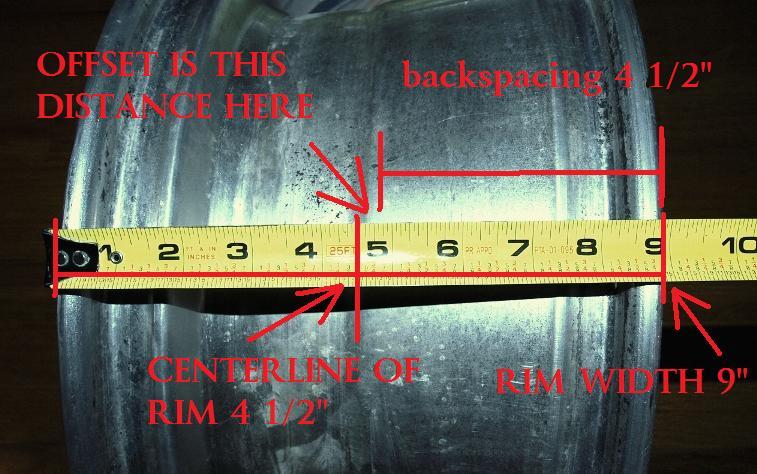
So, once you know the lug pattern, the backspacing, and the offset of the rims, then you can determine what rim you would be able to fit on your car. The measurements of the stock rims on the Firebirds and Trans Ams are as follows:
| Rim Type |
Offset |
Backspacing |
| Rally II |
+1/4" |
4 1/4" |
| Honeycomb |
+1/2" |
4 1/2" |
| 15x7 Snowflake |
+1/4" |
4 1/4" |
| 15x8 Snowflake |
0 |
4 1/2" |
| 15x7 Turbo |
|
|
| 15x8 Turbo |
|
|
